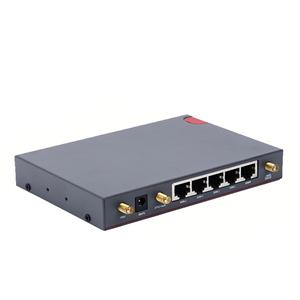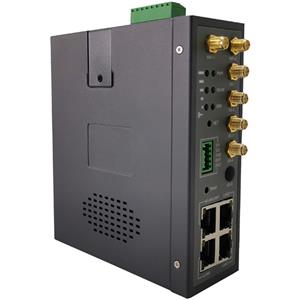Buy Cheap router 4g sim card slot DIN RAIL MOUNT wifi for car Price
router 4g sim card slot DIN RAIL MOUNT wifi for car
Cheap router 4g sim card slot
With the promotion of 5G technology in the United States and worldwide, the network is slowly introducing compatible devices to take advantage of this remarkable increase in speed. This includes smartphones, of course, but it also means that 5G mobile hotspots are here.
One of the first products on the market was Verizon's MiFi M1000, whose price was much higher than that of its 4G LTE counterparts.
Verizon's Jetpack MiFi costs $200, compared with half the price of other companies'4G hotspots, and the network's first 5G product costs $650. Of course, it's just the cost of the device itself; you also need to spend a lot of money on 5G data.
There's a two-year plan to help break it down into 24 instalments of $27.08, and then you'll see Verizon's 5G package for $90 a month. This is Verizon's only 5G MiFi program, which includes 50GB of 5G data. The download speed should easily exceed 100 Mbps, or even 300 Mbps in some places, but once 50 GB is used, the download speed will drop to 3 Mbps.
Since 5G is currently available only in a small area of some cities, MiFi can also connect to the 4G LTE network, while the $90 package includes 15GB LTE, once used up, the speed of the 4G LTE will drop to 0.6Mbps. Currently, Verizon's 5G service is available only in Denver, Chicago, Minneapolis, Providence and parts of Sao Paulo, Minnesota.
Another limitation is that the device only uses 5G downloads. Uploading is done on a 4G LTE network, but this does not affect the capacity of 15GB.
If your smartphone already has an unlimited Verizon package, you can buy 5G MiFi service (50GB 5G and 15GB 4G) for $30 a month, plus $650 for the device itself.
Either way, joining the 5G trend as an early adopter is expensive and has limited coverage. The latter, of course, will improve in the coming months, and prices will inevitably fall, just as in the past four or three gigabytes.
Buy Router DIN RAIL MOUNT
For now, although it sounds attractive to provide your device with 5G hotspots (which can last 24 hours at a time), we recommend waiting until 2020 to try 5G again.
Claroty, a network security provider, recently released version 3.5 of Continuous Threat Detection (CTD) security monitoring and risk assessment for Internet of Things and OT devices. Claroty acknowledges that the boundaries between the Industrial Internet of Things (IoT) and Operational Technology (OT) are becoming increasingly blurred. Many end users in manufacturing and infrastructure are adopting Internet of Things (IOT) technologies, which are increasingly touching on key processes. Network security must be a priority for maintaining the security of network assets and processes. In addition to bridging the gap between networking and OT, Claroty also touts faster deployment features and a new machine learning (ML) alert algorithm, promising to reduce unnecessary alerts.
ARC's own research shows that millions of Internet of Things devices are entering OT networks and environments. End users are increasingly concerned about how to balance the risks of adopting these new technologies with the technological advantages and business value propositions they offer. With the new version of CTD, Claroty aims to manage these risks by providing network security solutions for both managed and unmanaged Internet of Things assets.
router wifi for car Price
CTD can now automatically discover and classify any and all Internet of Things devices on the network, associate these devices with known vulnerabilities, and continuously monitor them using Claroty's five detection engines. Claroty's interface semi-automatically adds protocol support for new devices in this area. As a result, full spectrum and uniform visibility between the Internet of Things and OT devices do not pose any risk to operation.
Segmentation of the network can bring many benefits, but the actual implementation may be difficult and time-consuming. CTD's new virtual area + feature automatically marks assets with similar network traffic parameters into logical groups. Once grouped, CTD identifies the relationship between logical groups and automatically generates granular communication strategies. Policies assign permission levels and specific trust levels to each region to help end users understand the risks of each logical connection between regions. An exception-based alert indicates a violation of this trust.
This year marks the massive launch of Wi-Fi 6, the latest version of our 802.11 wireless communication standard, commonly known as Wi-Fi. This new standard 802.11ax will support faster and more efficient router performance and enable it to handle a large number of connections to many devices at the same time (you can learn more about how these connections work by clicking here).




